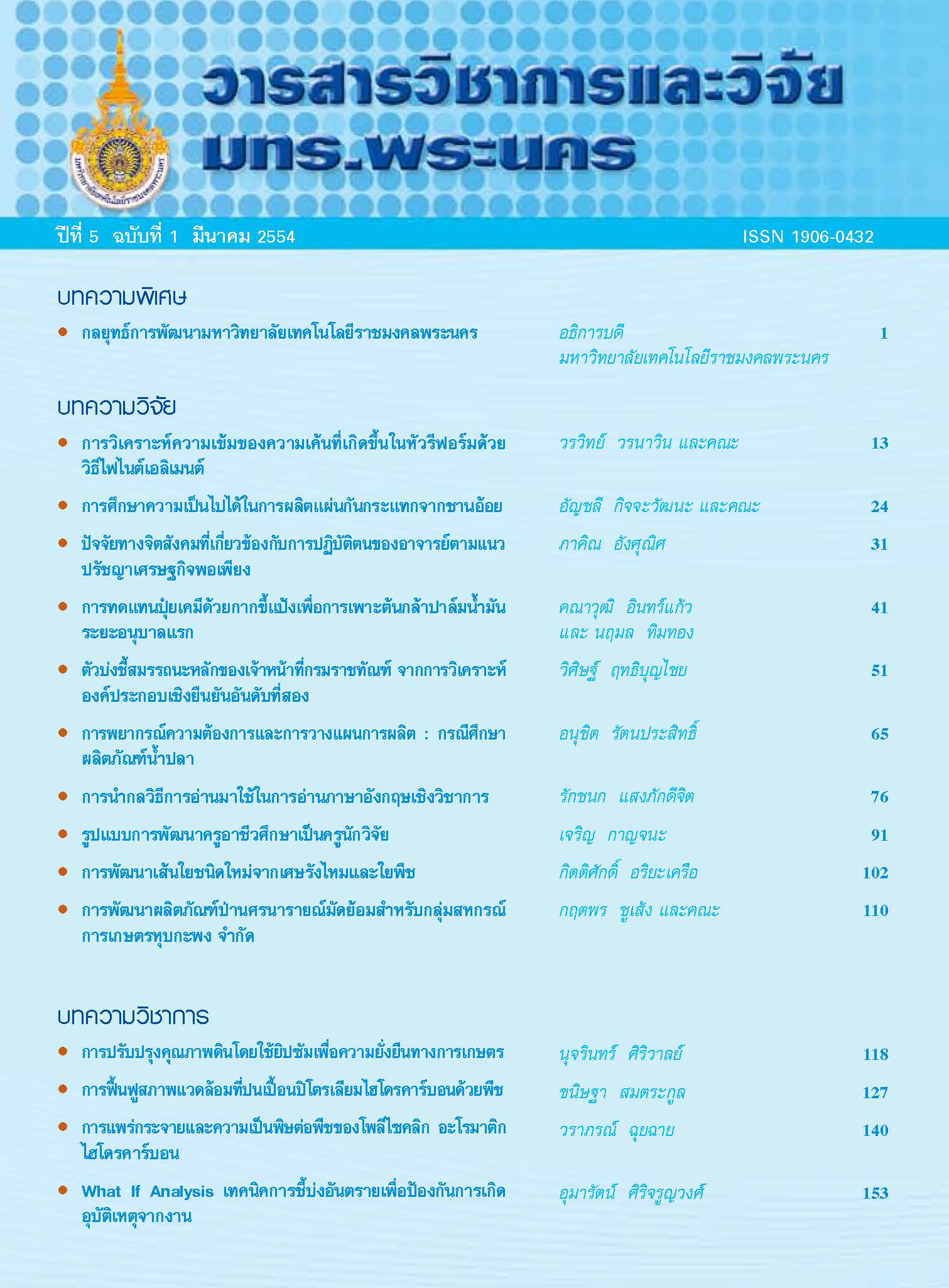What If Analysis เทคนิคการชี้บ่งอันตรายเพื่อป้องกันการเกิดอุบัติเหตุจากงาน What If Analysis: Hazard Identification Techniques for Preventing Work Accidents
Main Article Content
Abstract
บทคัดย่อ
What if Analysis เป็นวิธีการชี้บ่งอันตรายที่ง่ายไม่สลับซับซ้อน มีขั้นตอนการทำที่ยืดหยุ่นสูง ด้วยการ ระดมสมองของทีมวิเคราะห์ที่ต้องมีความรู้และประสบการณ์เป็นอย่างด เพื่อคิดคำถามเกี่ยวกับเหตุการณ์ไม่พึง ประสงค์ที่อาจจะเกิดขึ้นซึ่งเป็นสาเหตุของการเกิดอุบัติเหตุหรืออุบัติภัยร้ายแรง ด้วยการตั้งคำถามว่า “จะเกิด อะไรขึ้นถ้าเกิดเหตุ.....” หรือ “ถ้าเกิดเหตุ.....จะเกิดอะไรขึ้น” เทคนิคนี้สามารถนำไปใช้ในทุกช่วงเวลา และจะเกิด ประโยชน์อย่างยิ่งหากนำไปใช้ในช่วงการออกแบบหรือการปรับปรุงแก้ไขระบบเดิม เพราะระบบต่าง ๆ จะถูก เปลี่ยนแปลงแก้ไขให้เกิดความปลอดภัยตั้งแต่ต้น อีกทั้งยังเหมาะสำหรับนำไปใช้ค้นหาอันตรายจากกิจกรรมที่มี ลักษณะไม่ตายตัว ได้แก การขับรถ และการทำความสะอาด ขั้นตอนการจัดทำเทคนิคนี้ประกอบด้วย 4 ขั้นตอน คือ กำหนดขอบเขตการตั้งคำถาม การจัดทีมผู้วิเคราะห การศึกษาข้อมูลและเอกสารที่เกี่ยวข้อง และการสร้าง คำถามและหาผลกระทบที่เกิดขึ้น ทีมวิเคราะห์ควรประกอบด้วย เจ้าของพื้นที่วิศวกรออกแบบ เจ้าหน้าที่ ความปลอดภัย ช่างเทคนิค ช่างซ่อมบำรุง เป็นอย่างน้อย หากใช้เทคนิคนี้ชี้บ่งอันตรายเพียงเทคนิคเดียวควรระวัง การมองข้ามปัญหาสำคัญที่เกิดจากเหตุการณ์มากกว่าหนึ่งเหตุการณ์สัมพันธ์กัน
คำสำคัญ : What if Analysis เทคนิคการชี้บ่งอันตราย
Abstract
What-If Analysis is a simply, uncomplicated hazard indication method. Its analysis method is highly flexible by brainstorming of analytical team that have good knowledge and experiences for thinking about questions regarding undesirable events that might occur and cause severe incidents or accidents by the asking questions begin with “What If…..?” or “What would happen if…?”. This method can be used for any time and it will get highest benefits if it is used during the design process or improvement of existing systems because all systems will be improved to be more safety at early stage. Furthermore, it is also suitable to identify hazards from dynamic activities such as car driving and cleaning, etc. What-If Analysis includes 4 steps: establishing cope of questions, setting analytical team, studying information and related documentation, establishing questions and finding effects. Analytical team should include at least landlord, design engineer, safety officer, technician and maintenance technician and if this analysis method is used for only identifying hazard technically, and if should beware of overlooking critical problems occurred from many related incidents.
Keywords : What if Analysis, Hazard Identification Techniques


